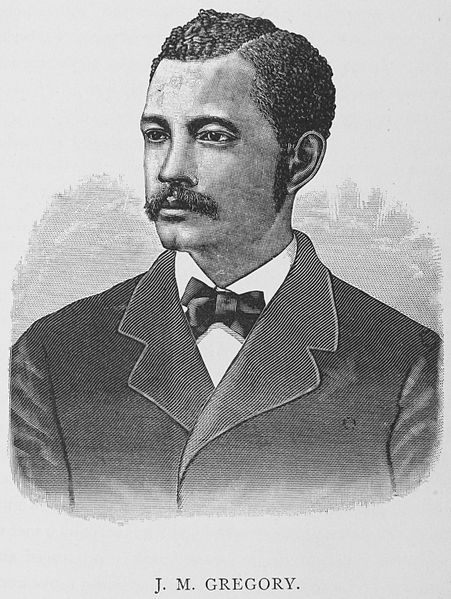James Monroe Gregory was a Professor of Latin and Dean at Howard University. During the American Civil War, he worked in Cleveland for the education and aid of escaped slaves. He initially attended Oberlin College. He transferred to Howard and was the valedictorian of Howard's first graduating class in 1872. He then became a member of faculty, where he served until the late 1880s. During that time he was active in civil rights, particularly related to the education of African American children. He fought to desegregate Washington, D.C., schools in the early 1880s and participated in the Colored Conventions Movement and was a delegate to the 1892 Republican National Convention. In 1890, he founded the American Association of Educators of Colored Youth. In 1893, he published a biography of Frederick Douglass. In 1897, he was removed at Howard and moved to New Jersey where he became principal of Bordentown Industrial and Manual Training School.
Gregory in 1887
The Bordentown School was a residential high school for African-American students in Bordentown in Burlington County, New Jersey, United States. Operated for most of the time as a publicly financed co-ed boarding school for African-American children, it was known as the "Tuskegee of the North" for its adoption of many of the educational practices first developed at the Tuskegee Institute in Alabama. The school closed down in 1955.
Bordentown School


